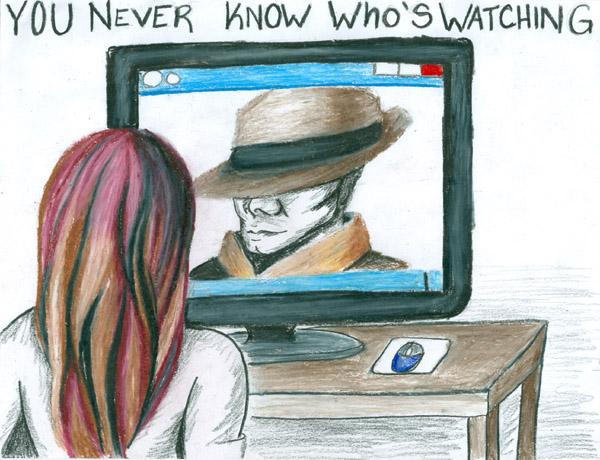
Teen cyberstalking
February 2, 2015
“As the world becomes more dependent on technology as a means of communication and recreation, computer crime has been increasing at an alarming rate.” ~stalkingriskprofile.com
The Virginia Department of Criminal Justice Services defines stalking as “repeated contact directed at someone that could reasonably be understood to put that person in reasonable fear of death, bodily injury, or criminal sexual assault.” Stalking, cyberstalking in particular, is an increasingly relevant concern for teenagers.
Annually, 1.4 million people are stalked, the primary age of victimization occurring between 18 and 24 years old, an age group particularly influenced by technology and, therefore, particularly susceptible to its dangers.
Thus, as social media and online identities increase in popularity, so does the risk of obtaining a stalker.
Increasing amounts of personal information on the Internet allow stalkers access to personal details remotely and follow information trails to more sensitive specifics. In addition, the Internet offers stalkers a masking capability, where they can hide their identity from the victim, posing as a friend.
Furthermore, the expanse of the Internet also removes geographical boundaries, allowing victimization from afar. And yet, according to a study by the Center of Disease Control (CDC), 85 percent of victims are stalked by someone they know.
Though cyber stalking may seem less threatening than other methods of stalking, it is regarded as a felony and can be equally as threatening to victims.
According to “The RECON Typology of Stalking” from the Journal of Forensic Sciences, 78 percent of stalkers use more than one approach when pursuing their victims, allowing seemingly innocent or harmless initial online stalking to escalate to more frequent and violent interaction offline.
And, just because the victimization is online, does not mean that the harassment is not equally damaging to the victims.
“The Toll of Stalking,” an article from the Journal of Interpersonal Violence says that, “the prevalence of anxiety, insomnia, social dysfunction, and severe depression is much higher among stalking victims than the general population.”
Awareness and online safety are especially essential to teenagers moving into the primary age for victimization, greatly decreasing the extremely harmful physical and emotional risks of stalking, both online and otherwise.
In order to help insure online safety, victimsofcrime.org recommends not sharing sensitive personal information on the Internet, including home address and phone number. It is also important and necessary to implement and regularly change passwords.
However, once the presence of a stalker is discovered, it is important to call 911 if in immediate danger, as well as to document activity for evidence when reporting an incident or getting a court order. Also, getting help from a crisis hotline or similar agency, as well as seeking solace and emotional support in friends and family is important.
When emphasizing online safety, it is easy to confuse the fact that stalking is never the victims’ fault. Safety measures and awareness should be exercised to reduce the risks, but the victim is never to blame for a crime.
Just because technology is an easy avenue for cyberstalking does not undermine its value to society. Technology adds much to modern culture, including increased communication and access to information.
As the horizons of technology expand, teenagers in particular must be cautious to protect themselves from the dangers of cyberstalking by exercising safe online habits.